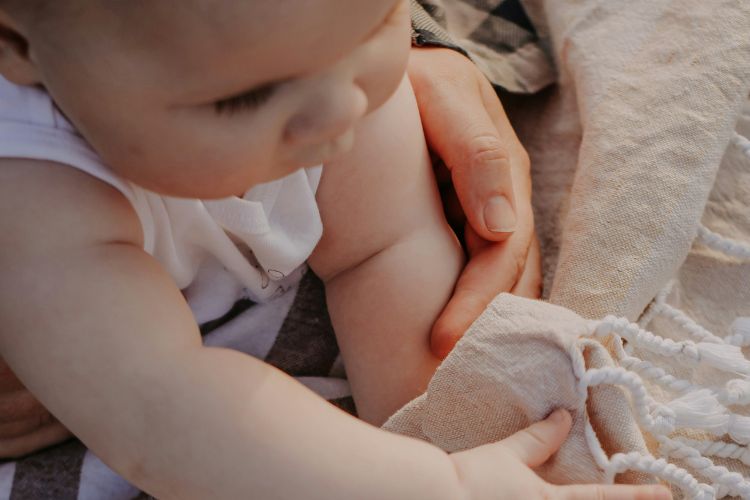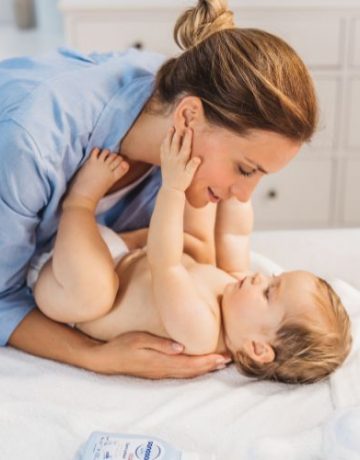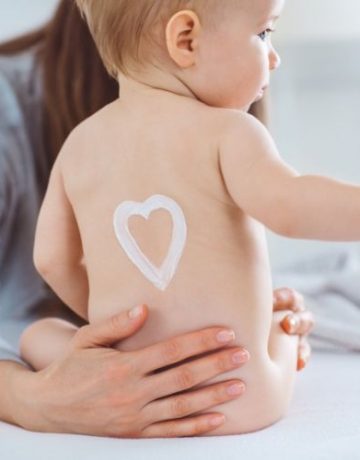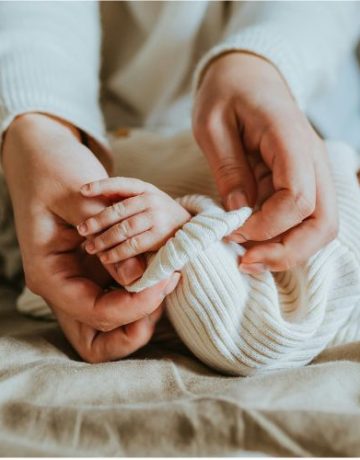Heat rash in babies and toddlers
This article was written by Dr. Pleimes, a specialist in pediatrics, dermatology, and allergology.
Learn more about Dr. Pleimes here.
What is heat rash?
Heat rash, also known by the technical term miliaria, is a skin condition that occurs when sweat becomes trapped under the skin due to blocked sweat glands. Heat rash is particularly common in babies and toddlers, as their sweat glands are not yet fully developed and the sweat ducts are still very narrow. Small, skin-coloured to reddish blisters or papules, usually only a few millimetres in size, appear on the skin. The children are fine and there are no signs of infection. Their occurrence is promoted by the environment, if there is a warm, humid climate, but also by local factors such as wearing the wrong clothing, using very oily creams or oils, or, for example, if the skin is covered by plasters or bandages.
What types of heat rash are there?
There are three main forms, which differ in appearance and symptoms:
1. Miliaria crystallina
- Superficial form
- Small, clear, fluid-filled blisters
- No pain or itching
- Often on the head, neck or upper body
- Especially common in newborns in the first weeks of life
2. Miliaria rubra, the ‘classic’ red heat rash
- Most common form in children (usually not before the third week of life)
- Small red spots or papules, sometimes accompanied by itching or burning
- More common in skin folds or on the neck, chest or back
- Particularly worse in hot, humid weather
3. Miliaria profunda
- Rarer form in which the blockage of the sweat gland duct is slightly deeper.
- The individual bumps on the skin are larger and can be either skin-coloured or reddened.
Tips for preventing heat rash in babies and toddlers
What can you do to prevent or improve heat rash in your baby?
Keep your child cool
- Use light, breathable clothing
- Avoid overheating, especially when sleeping
- If necessary, use fans or air conditioning if available
Soothe the skin
- Bathe at a lukewarm to cool temperature and gently pat the skin dry. But be careful: newborns should not be bathed in cool water, as hypothermia can quickly occur.
- Do not use oily creams – they can further clog the pores. It is better to use light, water-based lotions. This also applies to products such as sunscreen.
Avoid irritation
- Keep the skin dry and avoid tight, non-breathable clothing
- Change sweaty clothing regularly
- Keep fingernails short to avoid scratching and further inflammation of the affected areas
When should you take your child to the doctor? When should heat rash in babies and toddlers be seen by a doctor?
- If the rash does not improve after 3–4 days or even gets worse
- If there are signs of a local infection: pus, swelling, fever or increasing redness
- If the child shows severe discomfort or develops a fever. In this case, the rash may be part of an infection.
The good news is that heat rash usually disappears on its own if the above recommendations are followed and the heat build-up is eliminated. In most cases, no special treatment is necessary.








Comments (0)